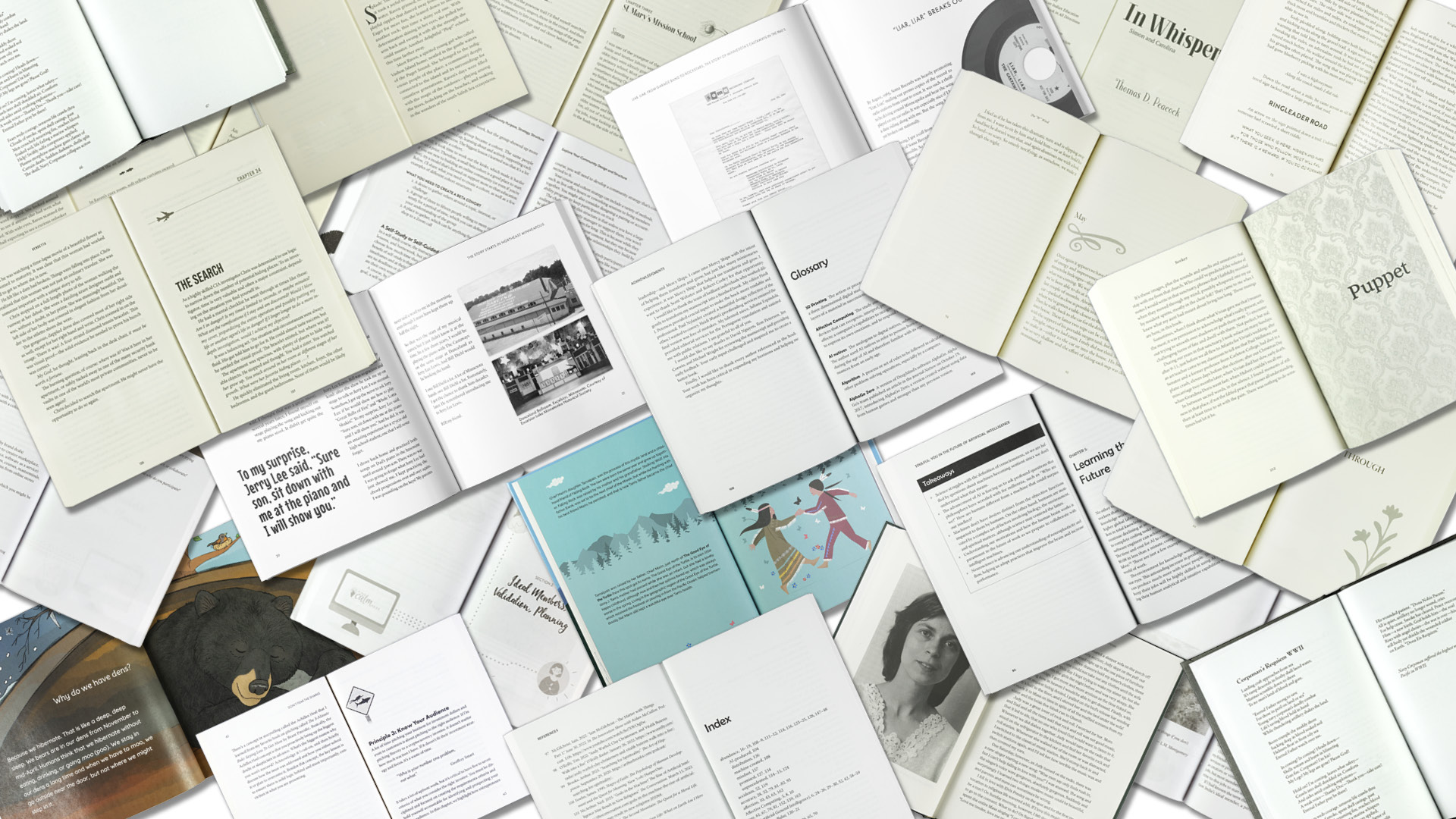
A book’s interior design deserves the same attention and artistry as its cover. While automated and online tools offer functional solutions, they rely on templates and algorithms that lack the creativity, nuance, and craftsmanship of a professional designer.
Typography, layout, and design aren’t just about mechanics—they’re about creating a cohesive, intentional, and delightful reading experience that harmonizes with the book’s purpose. Investing in professional design is a reflection of the care and passion you’ve poured into writing your book, ensuring readers notice the thought and detail behind every page.
Recognizing the Value of Professional Design
I want to compliment designer Andrea Reider for her guest post on Jane Friedman’s blog last week. It really did get me thinking. The nine points she makes about why a professional designer can help your book interior are spot on—from picking fonts and page size and balancing pages and line breaks to image placement and enhanced ePubs. True, true, all true.
Artistry and Craftsmanship: The Heart of Book Design
That said, I was a little concerned that her post unintentionally made designing a book’s interior sound somewhat mechanical or formulaic. To be fair, much of book design (layout) and formatting (typesetting) is rooted in mechanics. In the old days, it was literally arranging pieces of metal type by hand. Even today, modern digital typesetting is built on those foundations.
But design has always been more than mechanics. A well-designed book isn’t just functional; it brings delight by inviting readers into a space where the visual design enhances the text, and the interior harmonizes with the cover to elevate the entire experience. There is an elegance to well-set type—the balance of ink and open space—that transforms reading into a unique and pleasurable experience.
For that reason, at least as much care and attention should be given to a book’s interior design as to its cover design. Exactly how much depends on the type of book, genre, and your publishing goals. But we can all agree that to reflect your best work, both cover and interior must work together to enhance the book’s purpose and elevate its message.
In this way, designing a book is more than a checklist; it’s an opportunity for artistry, creativity, and joy. It reflects the care and intention behind the words, crafted to resonate with readers and elevate the book’s purpose as a whole.
Typography: The Silent Storyteller
Emotion, tone, and character are essential elements in writing; they are also critical to good design, especially in the interior of a book. How a book looks and feels will set the reader’s expectations long before they read the first word.
In this way, typography is the silent storyteller. A professional designer’s experience in typography balances elegance and readability, subtly guiding the reader’s journey through the text.
Simple isn’t Easy: Why Templates Fall Short
While tools like Vellum and Atticus are useful for producing serviceable interiors, they rely on templates and algorithms that lack the nuance of human creativity. They may offer quick fixes, but they don’t deliver the harmony, balance, and personality that a skilled designer can bring to the table.
While an automated tool (provided your book is straightforward) can undoubtedly get your project across the finish line, professional design goes beyond base functionality, transforming a book into a cohesive, intentional, and memorable object.
This transformation is also where the collaboration between author, publisher, and designer becomes more than the sum of its parts—it’s 1 + 1 = 3.
The Value of Professional Collaboration
Investing in a designer isn’t just about aesthetics; it’s about ensuring your book stands as a true reflection of the effort, passion, and pride you’ve poured into it. It’s about creating an experience readers will treasure long after the last page is turned.
This investment in design may be obvious if we’re talking about a complex coffee-table art book, a large-size textbook, or a business book full of charts and illustrations. But even on the other end of the complexity spectrum, in a children’s picture book, or a simple novel or memoir, professional design elevates a book’s design in ways that automation simply cannot.
Because readers do notice, even if only subconsciously. They sense the care in the details, the thought behind the design, and the intention behind every element. And that care reflects directly on you as an author or publisher. A professionally designed book interior sends a clear message: this book matters—and so does the experience of reading it.

Leave a Reply
You must be logged in to post a comment.